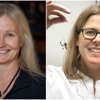Fritextsökning
Artiklar per år
Innehållstyper
-

Björn Arvidsson: ”Vi måste lyfta blicken för att hitta framtidens svar”
Vi måste lyfta blicken från våra egna specialområden och se de större sammanhangen. Först då kan vi utveckla lösningar som verkligen gör skillnad, skriver Björn Arvidsson i en krönika.
-

She is CSL Behring's new Nordic General Manager
Since the beginning of january, Helena Bragd is the new Nordic General Manager for the biotech company CSL Behring and CEO of CSL Behring AB.
-

The business coach: “We need to learn from our mistakes”
The past year has been challenging for many biotech companies, with several comapanies facing financial stress and bankruptcy. To understand how entrepreneurs can navigate these tough times, Life Science Sweden spoke to Pia Keyser, a business coach at Umeå Biotech Incubator, who has worked with many companies in the industry.
-

LINK Medical recruits Swedish CEO
The Norwegian Contract Research Organization LINK Medical has recruited Anders Göransson as the new CEO.
-

He takes over the chairmanship of Karolinska Development
Ben Toogood is appointed as the new chairman of Karolinska Developments.
-

Life science trends 2025 – The economy
Upcoming patent expirations are driving pharmaceutical companies to acquire in 2025. In Sweden, we may be on our way to brighter times and fewer bankruptcies. Today´s part of the series with trend insights in life science for 2025 is about the economy.
-

Leo Pharma i årets första nordiska miljardaffär
Danska Leo Pharma har ingått ett partnerskap med Gilead Sciences om att utveckla och kommersialisera nya läkemedel inom inflammatoriska sjukdomar.
-

Tio life science-projekt får miljonanslag – ny utlysning öppnar
En rad life science-projekt har fått miljonanslag i ett svenskt proof of concept-program. 13 januari öppnar en ny utlysning.
-

Life science trends 2025 – Part 1 obesity drugs
More obesity drugs are being launched this year following Novo Nordisk and Eli Lilly's previous successes with GLP-1 drugs. But the next big breakthrough in obesity has a different mechanism of action, writes Samuel Lagercrantz in the first article